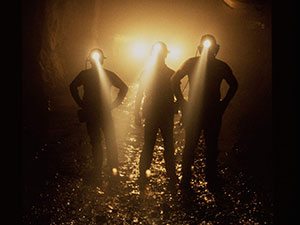
[miningmx.com] – ANGLOGOLD Ashanti said about 7% of its production had been interrupted by the 5.5 magnitude earthquake that struck Orkney in South Africa’s North West province on August 5.
The group hailed its response to the seismic event, deemed to have occurred 8km underground, as well as that of Eskom which quickly restored power to AngloGold’s Vaal River operations. However, AngloGold said it was unsure when output would resume.
AngloGold mines affected by the earthquake, which reverberated as far afield as KwaZulu-Natal province, were Moab Khotsong and Great Noligwa comprising 212,000 ounces and 83,000 oz respectively of the 4.1 million oz produced by AngloGold in its 2013 financial year.
The other mine in the Vaal River region – Kopanang – as well as the mines located in the West Wits region of South Africa were unaffected by the earthquake.
“Once it is clear that we have the correct power feed and underground areas and infrastructure are deemed safe, a decision will be made on resuming normal shifts,” AngloGold Ashanti said in a statement to the Johannesburg Stock Exchange.
“At this stage, we will wait for the appropriate underground conditions and then conduct thorough assessments,” it said, adding that it would provide an update when it reported its second quarter financial and operating results on August 11.
Some 3,300 workers were hoisted to safety following the earthquake of which 28 sustained minor injuries.
“Safely hoisting all 3,300 people to surface after an earthquake of this size is an achievement of which we’re immensely proud,” said Mike O’Hare, chief operating officer for AngloGold Ashanti’s South Africa region.
His comments come a day after the South African government’s mines inspector, David Msiza, called on mining firms with operations affected by the earthquake to ensure that the safety of miners was guaranteed.
In the event of a safety breach, the mines inspectorate imposes Section 54 stoppages until its officers have inspected the affected site. Production stoppages have been blamed in the past for poor financial results, especially at the platinum mines.
AngloGold said its engineers and specialists in tandem with external seismology experts, were conducting “… intensive, real-time intensive monitoring of seismic activity in the region”.
Underground infrastructure, as well as ore passes, haulages and working areas, would be inspected once it was deemed to proceed underground. “At this stage, vertical infrastructure is functioning well and the inspections conducted immediately after the
earthquake suggests that these shafts sustained only minor damage,” said AngloGold.
“Electronic systems that monitor various aspects of our underground areas are also working normally, allowing us to remotely draw information from a large portion of both mines,” it said.








